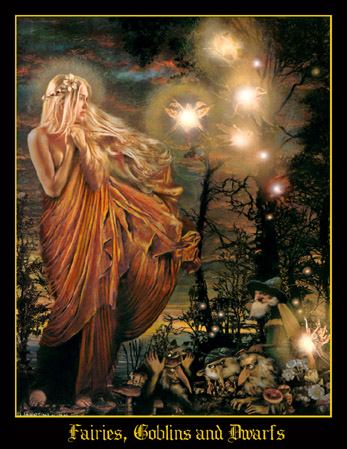



Do you believe in fairies?
by Diane Maclean
If you had asked your great-great-grandmother if she believed in fairies, she would have looked at you askance. Believe in fairies? Of course she did!
Ninety-five per cent of Scots continued to believe in fairies right up until the middle of the 19th century. These were not the diminutive, be-winged fairies of 1800s children's books. No, these were strange folk who bewitched you, killed your cattle and kidnapped your wives and daughters.
Click for Slide Show
Fairy lore flowed through the centuries, their presence acknowledged in ballads, poems and stories. They came in all shapes and sizes and different parts of Scotland had different myths. Even today they are remembered in the fairy glens and fairy hills found in every part of Scotland.
This belief in fairies extended beyond Scotland; there was almost universal acknowledgement that they existed.
There's no question that they existed. We have two fairy houses quite close by and we have records of conversations between fairies and people on the island.
-- Sir Iain Noble
"Fairy folklore was world-wide," says Dr Lizanne Henderson, a lecturer of history at the University of Glasgow's Crichton Campus. "They filled a need to explain the unexplainable. It was easier to look for a rational explanation for things that happened, and back then fairies were the rational explanation."
Yet for all that was written on the subject, there was no consensus about what the fairies were. Earlier writings speak of them as being dead souls or fallen angels. When a more "rational explanation" was needed, there was a move away from describing fairies as mystical and an attempt to place them within the human world.
John Frances Campbell of Islay was one of the first to go into print with his new theory. "I believe there once was a small race of people in these islands," he wrote in 1860.
Campbell’s theory remained speculative until a remarkable archaeological discovery in 2004 on the Indonesian island of Flores. The skeletal remains of a dwarf man, similar to modern humans, were discovered in a cave. Carbon dating proved that this small humanoid co-existed with modern man and may have survived until fairly recently. In light of this discovery, Indonesian folk tales of "little people" are being re-evaluated and questions are being asked if these abnormally small people have been living with us all along.
"I think it's highly unlikely," says Michael Bird, a geo-scientist and professor at St Andrews University who was involved in carbon dating the skull in Indonesia. "Although it's good for funding to let people speculate that they were around for a long time, I think it is probable that modern human ate them just as soon as they landed on the islands."
Monday, February 15, 2010
Posted by ..(@_@)cUtIE l0tZZ(@_@)... at 4:06 PM
Subscribe to:
Post Comments (Atom)






0 comments:
Post a Comment